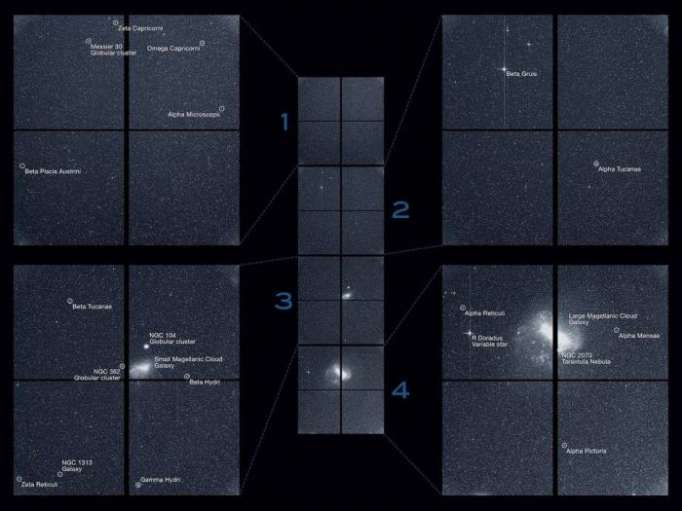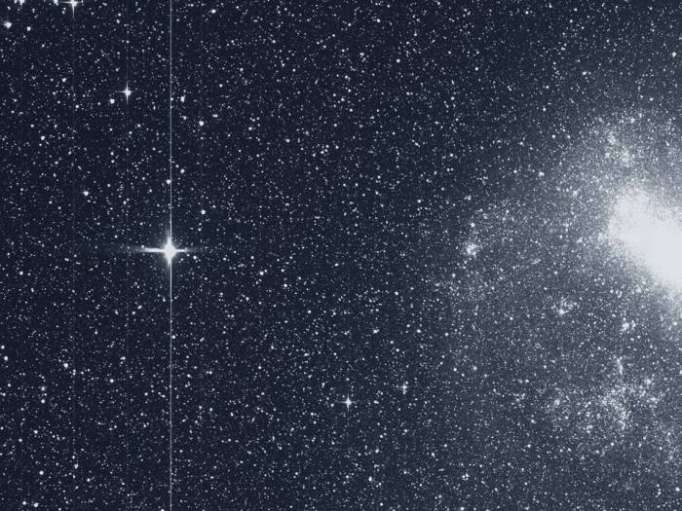TESS, short for Transiting Exoplanet Survey Satellite, is helping scientists detect and study new planets in other solar systems.
The telescope launched in April on a SpaceX rocket, and on July 25, TESS slipped into a unique orbit between Earth and the moon.
The telescope is now scanning the night sky, staring down distant solar systems, and hunting for small, rocky, Earth-like planets.
NASA just released the first science image captured by Tess, though it was actually taken in early August. The image above is just a portion of the full image — the bright part on the right is the Large Magellanic Cloud, while the bright star R Doradus is on the left.
The full frame captured a much bigger swath of the southern sky. The detailed image was produced using all four of the spacecraft's wide-field cameras for 30 minutes, while the portion above shows the view captured by a single detector of one of its cameras. (That should give you a sense of how powerful the whole telescope is.)
The image below shows more of TESS' "first light" image. Notable features include the Large and Small Magellanic Clouds. The brightest stars in the image, Beta Gruis and R Doradus, saturated an entire column of camera detector pixels on the satellite's second and fourth cameras.

"This first light science image shows the capabilities of TESS' cameras, and shows that the mission will realize its incredible potential in our search for another Earth." Paul Hertz, director of NASA's astrophysics division, said in a statement.
NASA plans to have TESS monitor 85% of the sky over the next two years, focusing on a new sector every 27 days. TESS will study 13 sectors in the southern sky the first year, followed by 13 sectors in the northern sky the second year. By the end of that period, TESS is expected to have observed about 200,000 stars.
To hunt for planets, the telescope will look for changes in a star's brightness level — an indication that a planet is passing in front of the star as part of its orbit.
Scientists anticipate that data from TESS could reveal thousands of new planets that are within 200 light-years of Earth. The team working on TESS even hope to find about 50 small, rocky planets that could behabitable to alien life.
Sara Seager, the deputy science director for TESS, previously told Business Insider that she expects to find dozens of Earth-like planets in the next few years, which could double the current list of potentially habitable exoplanets.
NASA has previously hunted for exoplanets with the Kepler space telescope, and detected thousands of them in a small part of the night sky. But Kepler has nearly run out of fuel and is currently in sleep mode.
TESS will scan a much larger region of the sky than Kepler did — and one that is closer to Earth.
"We learned from Kepler that there are more planets than stars in our sky, and now TESS will open our eyes to the variety of planets around some of the closest stars," Hertz said in an April press release. "TESS will cast a wider net than ever before for enigmatic worlds."
More about: #NASA
















































